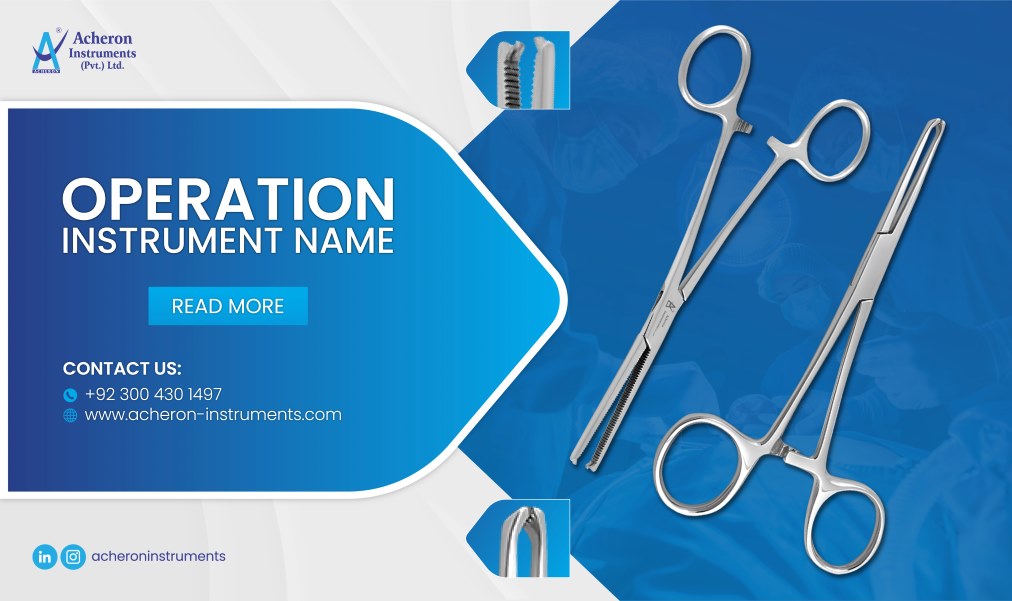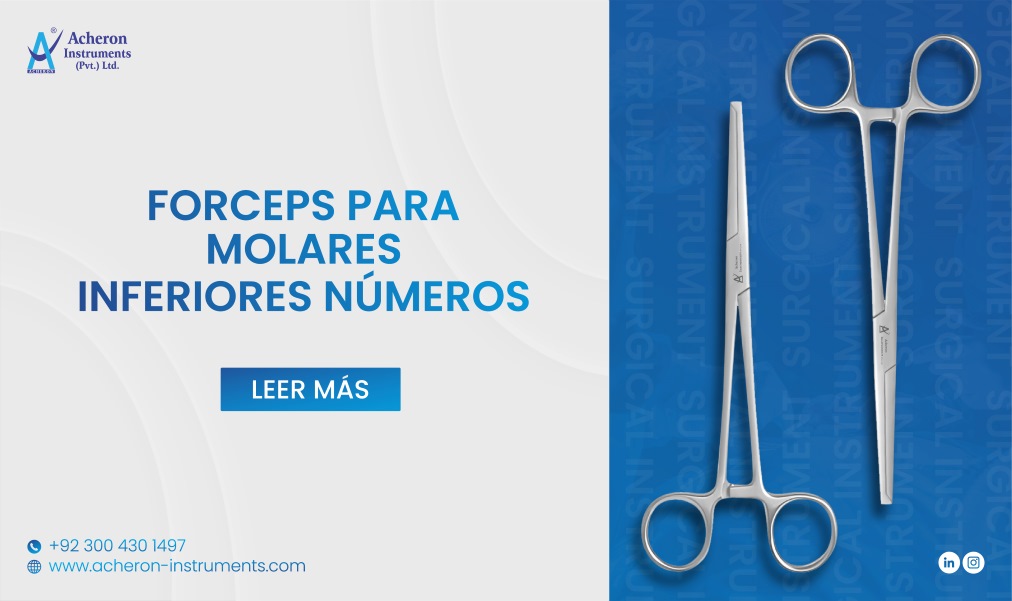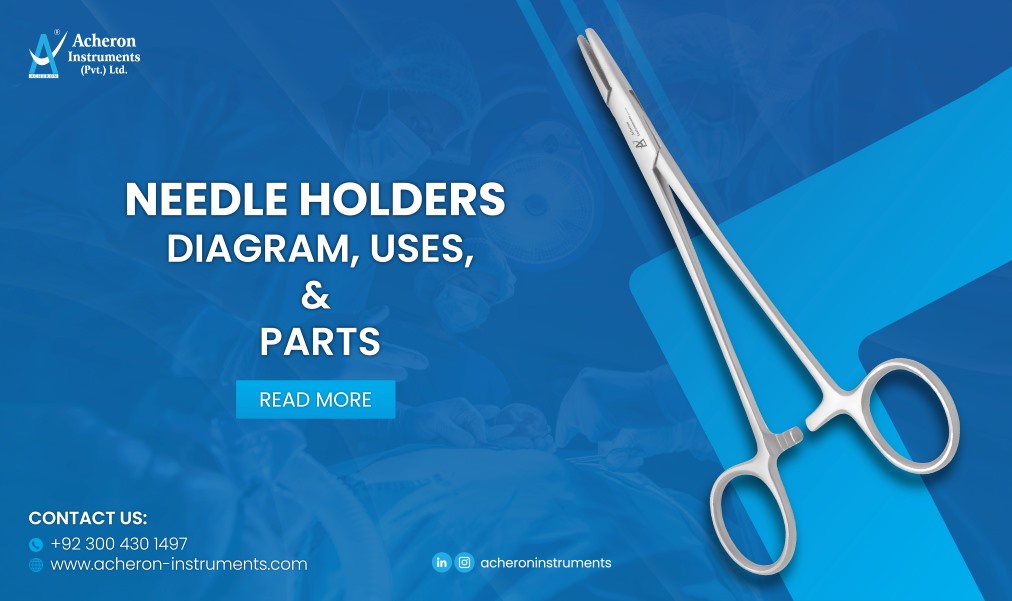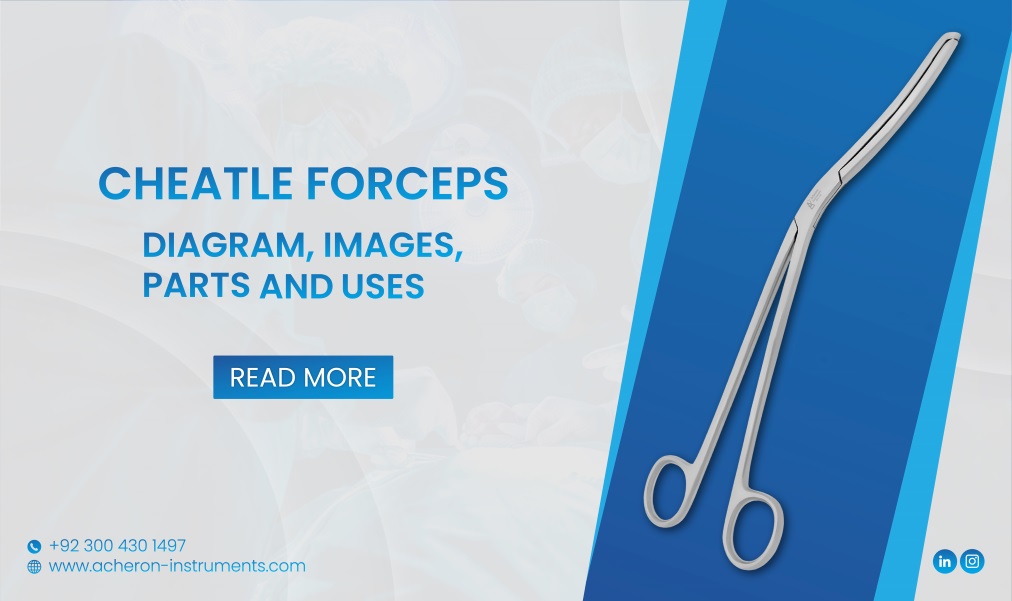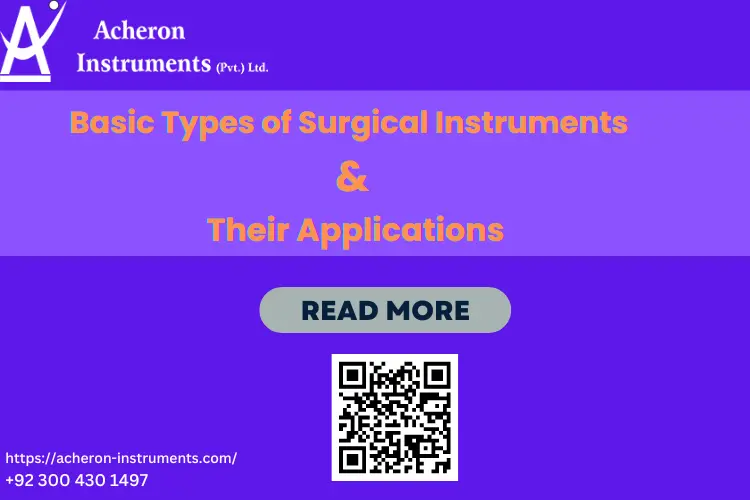
Surgical procedures hold a prime value when it comes to diagnosing, treating, and managing different health conditions. However, for successful surgical outcomes and to boost performance, surgeons use multiple surgical instruments. These tools assist surgeons to perform intricate procedures with precision and efficacy. Speaking of surgical equipment, there are plenty of surgical tools available where some of these are specialized for particular surgeries while others are useful for multiple surgeries. In this blog, we will be discussing basic types of surgical instruments and their applications.
As the number of surgical instruments is vast and it is very difficult to acquire knowledge about each one of those, we have classified them to make the understanding easier for you. The classification is based on the functionality of surgical tools as some surgical instruments are used for cutting, while others are used for retracting, occluding clamping, etc. Let’s have a closer look at their classification in detail:
Surgical instruments used for cutting and dissecting
Cutting and dissecting are essential tasks that every surgeon has to perform during surgeries. Cutting and dissecting tools come into use when surgeons have to cut through tough or delicate structures including soft skin tissues, muscle, fascia, etc.
The basic types of surgical instruments and their applications that come under this category include surgical knives, scissors, scalpels, curettes, dermatomes, etc. These tools are available in both disposable and reusable options. The scalpels are available in different sizes to attach different types of scalpel blades as per surgical requirements. For instance, plastic surgeons usually use blade 5, ENT surgeons prefer blade 12 for surgical practices such as tonsillectomy. Furthermore, vascular surgeons make use of blade 11 for puncturing large arteries.
Surgical scissors come in a wide range and some of them are useful for cutting tough structures such as mayo scissors. On the other hand, Metzenbaum scissors come in handy when surgeons have to deal with delicate tissues such as dissecting intestinal mesentery.
One important piece of equipment used for cutting bone fragments or soft tissues is surgical rongeur. Their sharp cup-shaped tips assist surgeons during surgeries to grasp small pieces of tissues or bone.
Surgical instruments used for occluding and clamping
Occluding and clamping surgical tools play a crucial role when surgeons have to maintain hemostasis and tissue integrity. Clamping instruments are used to grasp tissues or structures to facilitate exposure and manipulation while preventing tissue damage. On the other hand, occluding instruments restrict or block the blood flow temporarily.
Hemostatic forceps, crushing clamps, hemostats, and vascular clamps are examples of such surgical tools. These come in a variety of patterns along with straight, curved, and angled variations to suit different surgical approaches.
Surgical tools for holding and grasping
As the name suggests, these surgical instruments are intended for holding and grasping blood vessels or tissues to have a clear surgical field view. These instruments allow surgeons to boost their surgical performance by providing better visibility to the surgical area.
Some commonly used surgical instruments belonging to this category include Allis forceps, DeBakey forceps, tissue forceps, and dressing forceps, etc. Also, surgeons generally use Babcock forceps to grasp towels and intestines whereas rat-toothed forceps are useful when they have to grasp skin.
Instruments for enhanced visualization
Surgeons often have to explore the areas for making diagnoses and treatments that are not visible externally and need some special assistance. That’s where such instruments play their role by allowing surgeons to access deep structures optimally.
One such example of this category is speculums, anoscopes, endoscopes, and proctoscopes. These tools are a must haves especially in gynecological operating rooms.
Surgical tools for retracting and exposing
Various surgical tools make the visibility of the surgical area clear and expose it which makes the work easier. Surgical retractors are one such incredible tool that retracts the tissues or organs. Thus, allowing surgeons to have a better exposure to the surgical area. Also, one amazing feature of these tools is that they do not cause any damage to the surrounding structure. Both hand-held and self-retaining retractors come under this category.
For instance, surgeons use Balfour retractors in laparotomy as well as Farabeuf and Army Navy retractors. For sternotomy operations, surgeons mostly prefer Finochietto retractors, and Gelpi retractors are used in multiple surgical scenarios for facilitating operative area visualization.
Other surgical tools that come in handy for exposing the surgical area include skin hooks that are essentially useful for retracting skin edges. These amazing tools are used during wide-flap dissection procedures including face lift surgeries and mastectomy. Moreover, most of these hooks feature rounded tips that reduce tissue trauma.
Surgical instruments for suturing and stapling
Surgical tools used for stapling and suturing have a unique design that brings together the edges of skin and/or adjacent soft tissue. The suturing toolkit used in healthcare facilities usually includes a suture needle, needle holder, fine suturing scissors, and toothed forceps. All these tools play a vital role in closing incisions and wounds with efficiency and precision.
Suture needles come in different shapes and sizes and are used alongside sutures which are either absorbable or non-absorbable. On the other hand, staplers are also a quicker alternative to suturing as they develop rows of staples to close incisions and reconnect tissues securely.
Additionally, certain instruments come with tungsten carbide jaws to prevent needle turning and twisting, improve grip and balance as well as prolong the instrument’s lifespan.
Surgical instruments for dilation and probing
In medical procedures, surgical tools for dilating and probing come into use when surgeons have to widen the openings like the urethra or the cervical os. Also, there are multiple sizes available for these instruments ranging from small to large. Surgeons typically begin with small dilators and gradually increase their size to expand the opening.
On the contrary, surgeons use probes to investigate the natural openings like the vagina, urethra, and common bile ducts. Examples of surgical probes include urethral and uterine sounds.
Instruments used for suctioning and aspirations
Surgical procedures usually result in a large amount of fluids and blood that can create a lot of mess in the surgical environment. To help maintain a sterile surgical field, surgeons make use of these tools to remove these fluids from their surgical area.
For instance, Yankauer suction tubes are used during oropharyngeal procedures whereas, Poole abdominal tips are used during laparotomy procedures. Apart from that, surgeons use Frazier tips during orthopedic and brain operations.
Conclusion
The importance of surgical instruments cannot be overstated. We have mentioned some basic types of surgical instruments and their applications that must be a part of every healthcare facility. These tools are must-haves of every healthcare facility that make a huge difference in performance and assist surgeons at so many levels. Also, every type of instrument mentioned in the above article is known for its distinctive characteristics and specialty.
However, the most important part that you should not forget is to get the best quality surgical tools as they last longer in your operating rooms instead of constant replacements and repairs.
Looking for high-quality surgical instruments?
If you are in search of high-quality surgical tools for your clinic/healthcare facility, you’ve reached the right place. Step into a world of excellence and precision with our incredible and extensive range of surgical instruments at Acheron Instruments. We have a wide range of surgical scissors, curettes, retractors, and whatnot! You’ve got it all under one roof!
Also, We offer ISO-certified surgical instruments made from high-grade German stainless steel material designed to enhance your skills and streamline your procedures.
Make the smart choice today and elevate your medical practice with our extensive range of basic types of surgical instruments and their applications. Your patients deserve the best, and so do you.
Contact us at the number given on our website for further assistance.


